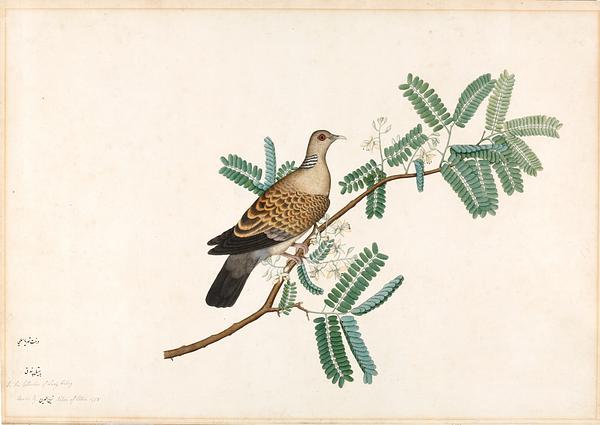Watercolor on paper. ‘A Turtledove on a Tamarind Branch.’ Signed by Zain al-Din
India, Calcutta; 1778
Leaf: 51.9 × 72.4 cm
The slow but sure disintegration of the Mughal Empire began with the death of the Great Mughal Aurangzeb in 1707. Britain’s East India Company gained growing influence in the ensuing period. From 1750, British civil servants began to commission work by Indian artists, who either painted their portraits or local architecture, the native population, flora, and fauna.
The best-known early commission on a large scale was made by Lady Mary Impey, wife of Sir Elijah Impey, Chief Justice of Bengal. During her brief stay in Calcutta between 1777 and 1783, over 300 watercolors were made on large sheets of imported English paper. The three artists she employed were the Muslim Shaikh Zain al-Din and two Hindus, Bwawani Das and Ram Das – all from Patna.
All were trained in the naturalistic tradition of Mughal painting and quickly became accustomed to the style and larger format that their European clients wanted. Zain al-Din was the oldest and best of the three, and his depictions of plants and animals were both sensitive and artistic, while remaining true to nature.
Inv. no. 38/2008
Published in:
Christie's, London, 7/10-2008, lot 272;
Jochen Sokoly and Alison Ohta: India: East / West: the age of discovery in late Georgian India as seen through the Collections of the Royal Asiatic Society, London, Doha Virginia Commonwealth University in Qatar, Doha [2010], fig. 12, p. 72;
Kjeld von Folsach: Flora islamica: plantemotiver i islamisk kunst, Davids Samling, København 2013, cat.no. 41;
